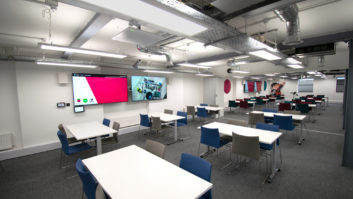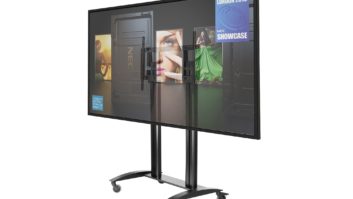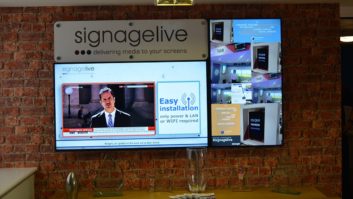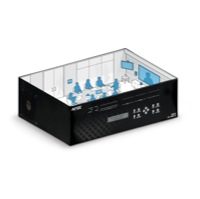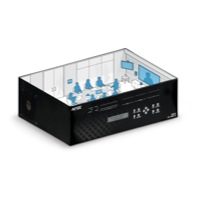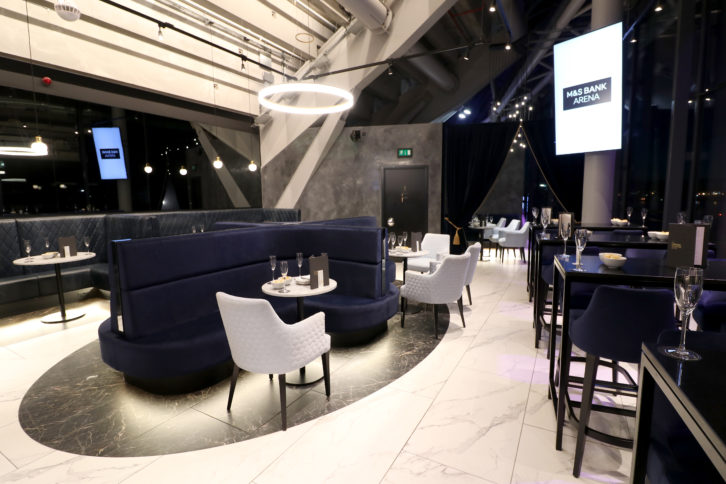
In the second part of our focus on the hidden world of mounts, Ian McMurray considers how the sector has changed and developed in recent years.
“In the last five years, we’ve seen far greater diversity in the range of mounts available as the AV market grows,” says Mark Childerhouse, who is sales director at Pioneer Group. “Mount manufacturers are working a lot more closely with integrators than ever before, creating a huge range of creative bespoke solutions. For example, we worked on a project at Liverpool’s M&S Bank Arena, for which displays are mounted back to back with a specialist mount, ensuring perfect viewing angles for footfall in both directions.”
The mounts industry is almost certainly a more complex one than many realise – and it has certainly changed over the years. As such, what was once true may no longer be true. So what advice would manufacturers give to a prospective buyer today?
“Always check that the structure you are mounting to can take five times the combined weight of the display and mount,” declares David Jopling, managing director of Unicol, “or, in the UK, ensure the mount and installer adhere to BS8590, which covers the safe installation of AV equipment.”
“When purchasing a mount for LCD or LED video walls,” says Peerless-AV’s Keith Dutch, “the advice we would offer varies depending on the use case and understanding the final application. It’s important to have a thorough understanding of the environment and the desired viewing locations, and making sure the ceiling or wall structure is strong enough to support the intended load. We would recommend confirming the compatibility of the mount with the display, as well as the many intricacies that buyers should pay attention to such as adjustability to support a wide range of flat panel brands and models. We also recommend the use of mounts that have been tested and qualified to UL safety standards. It is also crucial to consider the overall installation in terms of where power and cables are coming from.”
“For direct view LED screens,” he adds, “the mount needs to be seamless and offer adjustment on the X, Y, and Z axis to overcome wall imperfections, align pixels and smooth any installation irregularities.”
Not all equal
“Our customers mostly request ease of handling and speed of assembly as key elements to specifying mounts,” says Vision Audio Visual’s Stuart Lockhart. “Mounts that need specialist freight or two people to lift are far more expensive for integrators to deploy which means we are looking for ways to make them more modular, lighter and more intuitive.”
“Not all AV mounts are created equal, and I would advise thorough research, especially for large displays,” adds B-Tech’s Walker. “Pop-out mechanisms, for example, can vary enormously in lateral movement from manufacturer to manufacturer. A lot of lateral movement risks damage to an expensive screen. Ultimately, it comes down to precision mounting and a tidy, secure install.”
And, last but not least.
“Especially on complex installations,” says Childerhouse, “choose an experienced integrator who will work closely with the manufacturer – and you’ll get a superb result.”
There are other considerations too. Growing numbers of customers are asking potential suppliers about their environmental policies.
“Unicol has always taken sustainability seriously,” notes Jopling, “and, because our raw manufacturing materials are steel and aluminium, and packaging is the Unicol paper bag and boxes, we’re proud to say 98% of materials are recyclable.”
The role and importance of a mount can, it seems, be too easily undervalued. Childerhouse points out that his company has worked extensively with LED and video walls over the last decade – and in these large-scale projects, mounts are crucial.
Make or break
“When dealing with modular installations,” he says, “the mount can make or break a project as it affects how visible the seams are across the display for a uniform viewing experience.”
There is, then, plenty of experience, expertise and advice out there for prospective buyers to leverage – and the market has never been more competitive. And yet…
“To see and hear about installations where end users have bought consumer TVs mounted with cheap mounts and expect high performance and safety saddens the heart in such a professional industry,” sighs Unicol’s Jopling.
Talking to the industry, it becomes clear that what can too easily be an afterthought – ‘Oh, I guess we’ll need some mounts’ – should, in fact, be an integral part of the project planning and specification process. Just as there are innumerable types of screen and places to deploy them, so the mounting requirement will vary. Safety and security – at least among reputable manufacturers – is a given: in mounts, as in most things in life, you get what you pay for. The devil is often in the detail – in areas like ease of installation, ease of access and servicing and so on – making it imperative to undertake an in-depth analysis of the options available. It’s also apparent that many manufacturers offer custom designs for specific applications, and often on relatively short lead times – so the apparent unavailability of an appropriate mounting solution may not be a barrier.
Chief’s Gaskell has the final word. “It’s the nature of our job to be hidden behind a display, above a projector, or in the wall,” she smiles. “Lots of cool innovations go into a mount that never get seen except by people like us who like to peek behind the display. It’s awesome to be a part of a great installation – even if it’s not noticed.”
It’s the companies who develop the screens who attract all the attention and praise – and perhaps deservedly so. However, on the basis that those companies’ efforts would otherwise come to nought, it’s the mount manufacturers who may just be the unsung heroes of the audiovisual industry.


